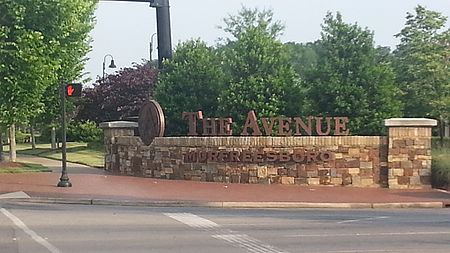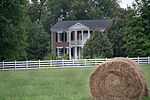The Avenue Murfreesboro

The Avenue Murfreesboro is an open-air regional lifestyle shopping center in Murfreesboro, Tennessee, located 27 miles (43 km) southeast of downtown Nashville. More than one hundred stores reside within the complex. The anchor stores are Michaels, David's Bridal, Petco, Off Broadway Shoes, Ulta Beauty, Best Buy, Dick's Sporting Goods, Bed Bath & Beyond, Belk, Havertys Furniture, Kirkland's, Cost Plus World Market, Barnes & Noble, and Old Navy. Construction of The Avenue began in July 2006, and the first phase of development opened on October 17, 2007, with 660,000 square feet (61,000 m2) of retail space available. A second phase completed the center with a total of 811,000 square feet (75,300 m2) at US$140 million.The Avenue was jointly developed and operated by Cousins Properties and Faison Enterprises; however, in August 2013 The Avenue was sold to Houston-based Hines Global REIT Inc. for US$163 million. This was a record price for an open-air, non-mall in Tennessee.As of June 30, 2013, eighty-five percent of the space had been leased.
Excerpt from the Wikipedia article The Avenue Murfreesboro (License: CC BY-SA 3.0, Authors, Images).The Avenue Murfreesboro
Medical Center Parkway, Murfreesboro
Geographical coordinates (GPS) Address External links Nearby Places Show on map
Geographical coordinates (GPS)
| Latitude | Longitude |
|---|---|
| N 35.8584 ° | E -86.4452 ° |
Address
The Avenue Murfreesboro
Medical Center Parkway 2615
37129 Murfreesboro
Tennessee, United States
Open on Google Maps





